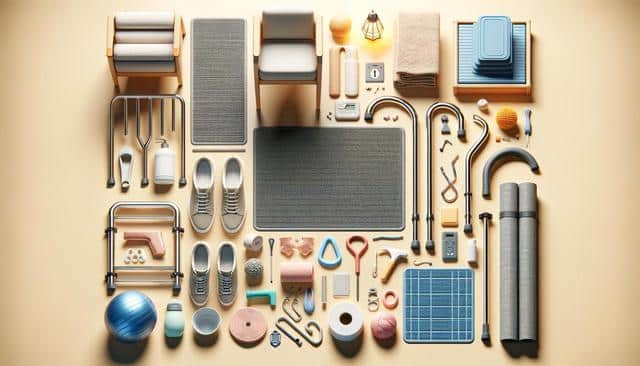
Essential Fall Prevention Products for Safer Senior Living
Why Fall Prevention Matters for Seniors
Falls are among the leading causes of injury for older adults, often resulting in fractures, hospitalizations, and a loss of independence. As we age, changes in balance, vision, and muscle strength can contribute to a higher fall risk. Fall prevention isn’t just about avoiding injury; it’s also about maintaining quality of life and confidence in daily activities. Investing in the right tools and making thoughtful adjustments to living spaces can significantly reduce these risks.
Many seniors live alone or spend most of their time without supervision, making it essential to identify and minimize potential hazards. Common triggers for falls include slippery floors, poor lighting, and hard-to-reach objects. With a combination of safety products and proactive planning, it’s possible to create a safer environment that supports mobility and independence.
Must-Have Accessibility Aids
Several products are designed specifically to support seniors in navigating their homes safely. Accessibility aids can make daily routines easier and reduce the physical strain that may lead to slips or missteps.
Some of the most helpful products include:
- Grab bars for bathrooms and hallways
- Raised toilet seats to reduce bending
- Shower chairs and transfer benches
- Bed rails for safer in and out movement
These devices are often easy to install and don’t require major renovations. When placed strategically, such as near toilets or staircases, they provide crucial support and stability. For seniors with limited mobility, even small enhancements like these can offer significant peace of mind and autonomy.
Flooring and Lighting Improvements
The condition and design of home flooring play a major role in fall prevention. Loose rugs, uneven tiles, and slippery surfaces are common culprits of falls in senior homes. Fortunately, there are simple fixes that can make a big impact.
Consider the following flooring improvements:
- Non-slip mats in bathrooms and kitchens
- Secure rugs with anti-slip backing or remove them entirely
- Install threshold ramps between uneven floor levels
- Ensure smooth transitions between rooms
In addition to flooring, proper lighting is essential. Dimly lit areas, especially during nighttime, can obscure obstacles and increase the risk of tripping. Installing motion-sensor night lights in hallways, bedrooms, and bathrooms can illuminate paths automatically, reducing the need to fumble for switches or navigate in the dark.
Footwear and Mobility Equipment
What seniors wear on their feet can greatly influence their stability. Supportive, well-fitting footwear with non-slip soles can help prevent accidents indoors and out. Avoid slippers that lack structure or shoes with smooth soles that don’t grip well.
In addition to footwear, mobility aids such as canes and walkers can provide essential support. Choosing the appropriate aid depends on the user’s needs and physical condition. Some walkers come with built-in seats and storage compartments, offering both convenience and safety for longer outings.
When selecting mobility equipment, make sure to:
- Measure for proper height and fit
- Choose lightweight yet sturdy materials
- Look for features like hand brakes or foldability
Consulting with a physical therapist or healthcare provider can help determine the most suitable option and ensure proper training in its use.
Technology and Monitoring Solutions
Modern technology can complement traditional fall prevention methods. Personal emergency response systems (PERS), smart home sensors, and wearable alert devices can offer added layers of safety for seniors, especially those living independently.
Some tech-based solutions include:
- Wearable fall detectors that alert caregivers
- Voice-activated assistants for hands-free communication
- Smart sensors that monitor activity or detect unusual patterns
- Video doorbells and home cameras for added security
These tools not only help in the event of a fall but also support ongoing monitoring of health and activity levels. Families and caregivers can stay informed and responsive, even from a distance. While technology should never replace personal interaction or care, it can play a valuable role in enhancing safety and reassurance.
Conclusion: Creating a Safer Home Environment
For seniors, fall prevention is a critical aspect of maintaining independence and well-being. By thoughtfully choosing and installing fall prevention products, it’s possible to create a home environment that minimizes risk and supports daily living. From simple home modifications like grab bars and non-slip rugs to more advanced solutions like wearable alert devices, each addition contributes to a safer, more comfortable lifestyle.
Whether for yourself or a loved one, taking proactive steps today can make a meaningful difference in health, confidence, and peace of mind. Prioritizing safety doesn’t mean compromising on comfort—it means enhancing the ability to enjoy life fully, securely, and with dignity.


